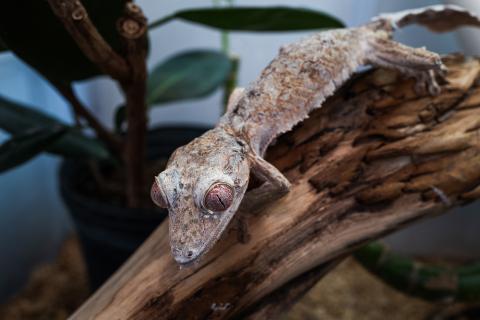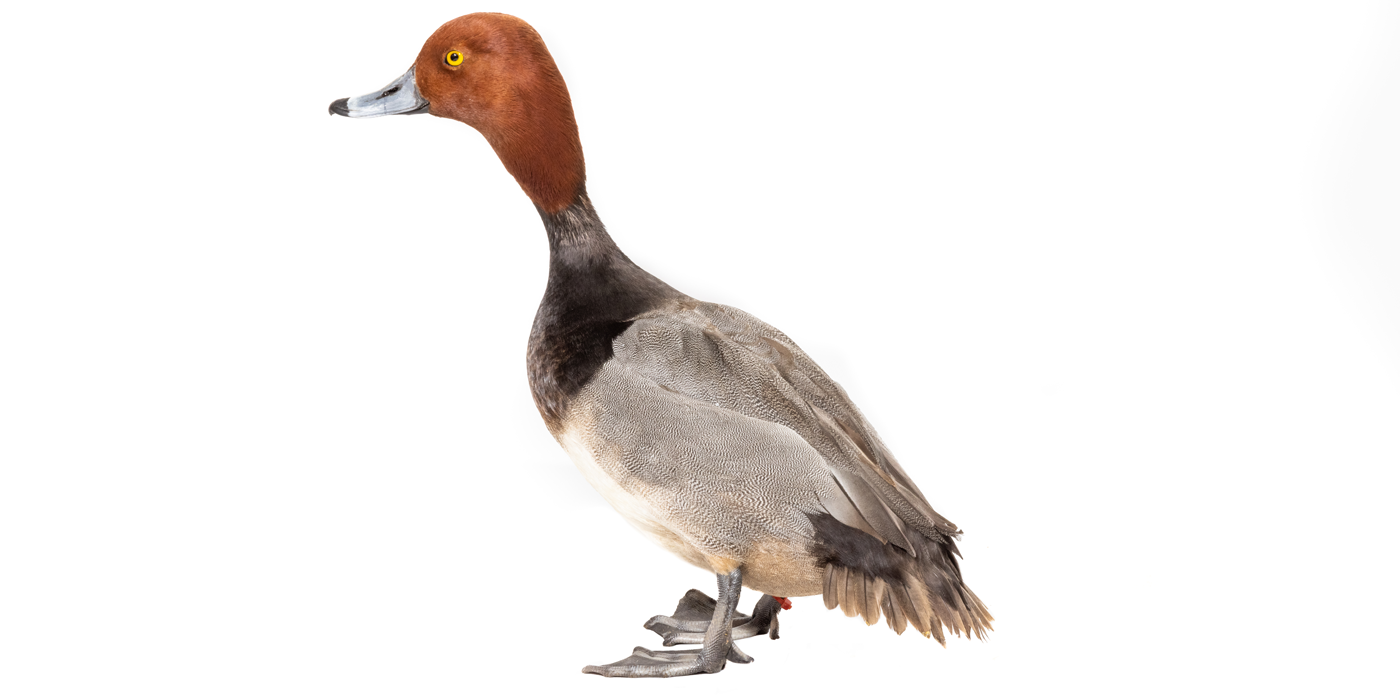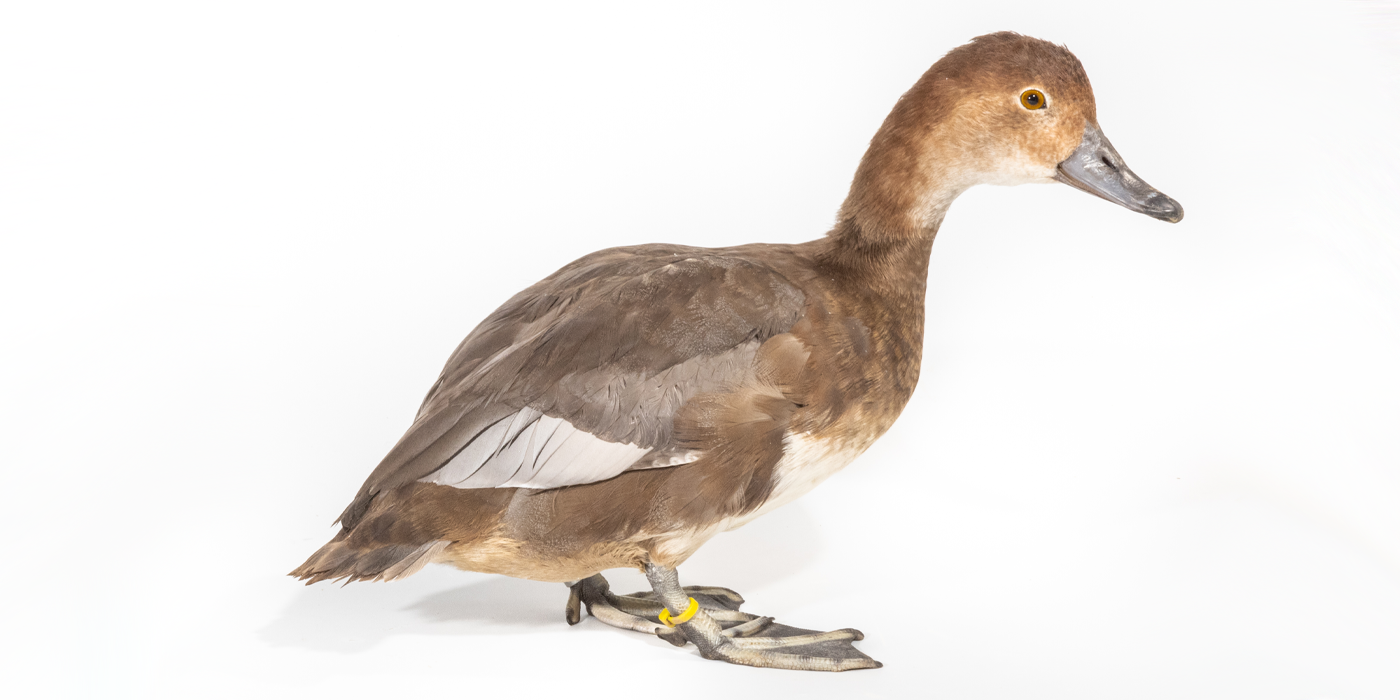Physical Description
Redheads are medium-sized ducks with smooth, round heads. Only breeding males have this species' trademark cinnamon-colored heads. Females are covered in light brown plumage. Breeding males also have a black neck, breast and tail, and a gray body. Both males and females have moderately large bills that are colored gray with a black tip. Non-breeding males look like females, except these males’ heads are a warmer shade of brown.
Size
Adult redhead ducks weigh between 1.5 and 3 pounds (0.63 and 1.5 kilograms), about the same weight as a small chicken. They are between 16.5 and 21 inches (42 and 54 centimeters) long with a roughly 30-inch (76-centimeter) wingspan.
Native Habitat
Redheads winter on the Gulf Coast, on the southeastern coastline of the United States, and in the Bahamas, Cuba, Guatemala, and Turks and Caicos Islands. Though, it is estimated about 80% of the North American population spends their winter on the Laguna Madre lagoon in Texas and throughout northern Mexico. Their wintering grounds and migration stopovers are primarily on lakes, reservoirs and bays, including throughout the Great Lakes region.
These ducks are frequently seen in the Prairie Pothole Region in the Midwest during breeding season. Redheads also breed on Canada’s prairies and in marshes throughout the mountain region in the western U.S.
Lifespan
Communication
Redheads make a cat-like, wheezy meow sound during courtship. Males will also make a low, guttural growling sound when threatened by other redheads. The females’ calls are a more traditional quack.
Food/Eating Habits
While considered a diving duck, redheads will sometimes forage for their food on the water’s surface like a dabbling duck. Redheads usually prefer to forage in shallower waters, where they eat a variety of aquatic plants and insects. They prefer to eat a plant’s leaves, stems, seeds and roots. Occasionally, redheads will eat mollusks and small fish.
Social Structure
During the winter and migration, redheads are found in large flocks mixed with other duck species like canvasbacks, wigeons, scaups and American coots.
Reproduction and Development
Many female redheads do not make a nest themselves. Instead, these ducks can be parasitic brooders, dropping all their eggs in another duck’s nest and leaving their ducklings to be hatched and raised by the other duck. More commonly, females will lay several eggs in other ducks’ nests and then also lay and raise a clutch on their own.
Sometimes several females chose the same nest and create a “dump nest.” These nests can become filled with up to 87 eggs and the eggs are never incubated.
Females that do build a nest chose a site in marshes and wetlands among dense vegetation. The nest is usually made over shallow water. Redhead nests are bulky, and are made using dead grasses and reeds, and lined with soft feathers.
While it is difficult to determine what a normal clutch size is for these ducks, it is estimated a redhead will lay between seven and 14 eggs. Females who raise chicks will incubate their eggs for 22 to 28 days. Females lead their chicks away from the nest one to two days after hatching. Redhead ducklings can feed themselves right away and can fly at about 2 months old.
Conservation Efforts
Redhead ducks are currently listed as a species of least concern on the International Union for Conservation of Nature’s Red List of Threatened Species. While they are popular among duck hunters, hunting limits are updated per species every year to help safeguard against population declines.
Help this Species
- Reduce, reuse and recycle — in that order! Cut back on single-use goods, and find creative ways to reuse products at the end of their life cycle. Choose recycling over trash when possible.
- Be a smart consumer. Choose products made with sustainable ingredients, such as Smithsonian certified Bird Friendly coffees, which support farmers striving to limit their impact on wildlife and habitat.
- Organize or attend a stream, river, lake or other waterway cleanup in your area to preserve aquatic habitats for local species.
- Are you a hunter? You can be an incredible ally for conservation! Check the conservation status of the animals you hunt and use methods that don’t impact other animals.
- Conservation starts with you! Join a citizen science project, such as FrogWatch or Neighborhood Nestwatch, where you can help collect valuable data for scientists. Encourage your friends and family to get involved too.
- Protect local waterways by using fewer pesticides when caring for your garden or lawn. Using fertilizers sparingly, keeping storm drains free of litter and picking up after your pet can also improve watershed health.
Animal News
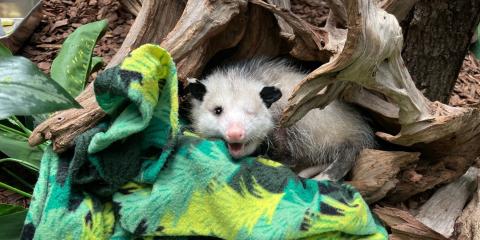
Remembering Basil, Our Virginia Opossum
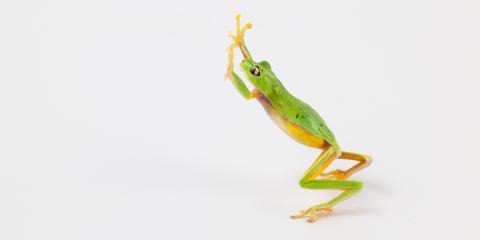
Happy Amphibian Week 2025
